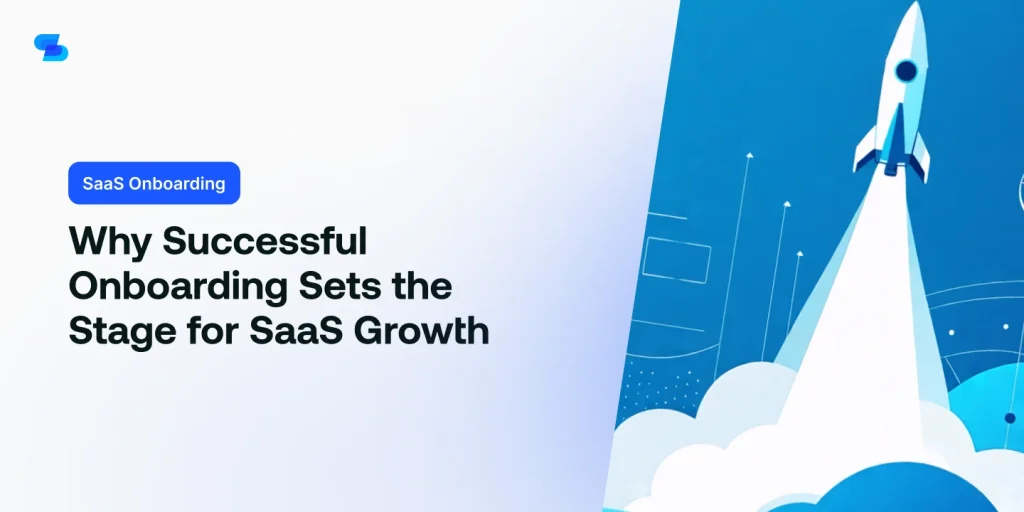As you navigate the complex landscape of SaaS growth, you’re likely aware that acquiring new customers is only half the battle. The real challenge lies in keeping them engaged and satisfied over time. That’s where successful onboarding comes in – an essential step in setting the stage for long-term loyalty and retention. By providing a seamless, personalized experience, you can reduce churn and foster a loyal user base. But what exactly makes onboarding so vital, and how can you optimize it to drive sustainable growth?
1. Reducing Churn With Personalized Experiences
By tailoring onboarding experiences to individual users’ needs and preferences, you can greatly reduce churn rates and set the stage for long-term customer loyalty. This is especially vital in the SaaS industry, where users expect a seamless and intuitive experience.
To achieve this, you need to gather data on your users’ behaviors, goals, and pain points. Then, use this information to create personalized onboarding pathways that address their specific needs. For instance, you can offer customizable tutorials, interactive guides, or even one-on-one support sessions. By doing so, you’ll make your users feel valued and understood, increasing the likelihood of them sticking around.
Additionally, consider implementing a phased onboarding approach, where you gradually introduce new features and functionalities as users become more familiar with your product. This will prevent overwhelm and guarantee a smooth learning curve.
2. The Cost of Poor Onboarding Efforts
Failing to invest in robust onboarding processes can lead to a staggering 40-60% of customers abandoning your SaaS product within the first month, resulting in significant revenue losses and damaging your brand’s reputation. You might think you’re saving time and resources by skipping a thorough onboarding process, but the long-term costs far outweigh any short-term gains. When customers don’t understand how to use your product, they’ll quickly lose interest and move on to a competitor that can meet their needs.
The financial implications are significant. You’ve spent time and money acquiring those customers, and now they’re gone, taking their potential revenue with them. Additionally, a poor onboarding experience can lead to negative reviews and word-of-mouth, further damaging your brand’s reputation and making it harder to attract new customers.
3. Setting Clear Expectations Matters
When you set clear expectations upfront, you empower customers to understand what they can achieve with your SaaS product, eliminating confusion and frustration that can lead to abandonment. By doing so, you establish a foundation for a successful onboarding experience that meets their needs and exceeds their expectations.
Clear expectations help customers understand the value proposition of your product, what they can achieve, and how to get there. This, in turn, builds trust and confidence, encouraging them to invest time and effort in learning your product.
To set clear expectations, define specific, measurable, and achievable goals for your customers. Communicate these goals through various channels, such as email, in-app messaging, or interactive tutorials.
Be transparent about the onboarding process, including the time and effort required to reach each milestone. By managing expectations effectively, you can reduce churn rates, increase customer satisfaction, and drive long-term growth.
4. The Role of Feedback in Onboarding
As you design your onboarding process, you’re likely wondering how to guarantee new users are getting the most out of your product.
That’s where feedback comes in – and it’s essential to collect it at the right moments.
Early Stage Check-Ins
You’re likely to see a significant drop-off in user engagement if you don’t implement early stage check-ins, which provide essential opportunities to gather feedback and adjust your onboarding strategy accordingly.
These check-ins help you identify potential roadblocks and make data-driven decisions to optimize the onboarding process. By conducting regular check-ins, you can catch issues early, address user concerns, and guarantee a smoother shift to long-term engagement.
When implementing early stage check-ins, it’s vital to ask the right questions. What’re users struggling with? What do they like or dislike about your product? What’re their goals, and how can your product help them achieve those goals?
The feedback you gather will help you refine your onboarding strategy, prioritize features, and create targeted content that resonates with your users. By doing so, you’ll be able to reduce churn rates, increase user adoption, and ultimately drive revenue growth.
Pain Points Identification
Identifying pain points through user feedback is essential to refining your onboarding process, as it allows you to pinpoint areas where users struggle and make targeted improvements to drive adoption and retention.
You can collect feedback through various channels, such as surveys, user testing, and support tickets. Analyze this data to identify patterns and areas where users are getting stuck or frustrated. This will help you understand what’s preventing them from achieving their goals with your product.
You’ll likely uncover common pain points, such as confusing UI elements, unclear instructions, or missing features. By addressing these issues, you can simplify the onboarding process, reduce friction, and increase user satisfaction.
For instance, you might redesign a confusing interface, add interactive tutorials, or provide additional support resources. By doing so, you’ll create a more seamless onboarding experience that sets users up for long-term success.
5. Streamlining the Onboarding Journey
When you’re streamlining your onboarding journey, you’re aiming to make it as smooth and efficient as possible.
You’ll want to identify and eliminate any unnecessary friction points that might be causing users to drop off.
Simplify the Process
By condensing complex steps into intuitive, easily digestible tasks, SaaS companies can greatly reduce friction in the onboarding journey.
You’ll make it easier for customers to understand what’s required of them, and they’ll be more likely to stick with your product.
To simplify the process, break down lengthy tutorials into bite-sized chunks, using clear and concise language.
Remove any unnecessary steps or features that might confuse or overwhelm users.
Also, consider implementing a progressive onboarding approach, where you introduce new features and functionality gradually, allowing customers to absorb and adapt to each new element before moving on to the next.
Set Clear Expectations
Set clear expectations upfront to avoid confusion and frustration, and guarantee customers know exactly what to expect from your onboarding process. This is essential because it sets the tone for the entire experience.
When you’re transparent about what’s involved, customers can mentally prepare and plan accordingly. You’ll reduce anxiety and uncertainty, leading to a smoother onboarding journey.
Be specific about what customers will learn, accomplish, or achieve during onboarding. Break down complex processes into manageable tasks, and provide clear instructions for each step.
Establish a clear timeline, outlining key milestones and deadlines. This will help customers stay on track and feel a sense of accomplishment as they progress.
Guide the User
You can greatly reduce friction points in the onboarding process by providing intuitive guidance that actively directs customers through each step.
This means breaking down complex tasks into smaller, manageable chunks, and using clear, concise language to explain what’s required. By doing so, you’ll help customers understand what they need to do, and how to do it, reducing confusion and frustration.
To guide the user effectively, use visual cues like arrows, buttons, and tooltips to draw attention to key elements.
You can also use interactive elements, such as click-through tutorials, to engage customers and make the onboarding process more dynamic.
Additionally, consider using progress bars or checklists to help customers track their progress, giving them a sense of accomplishment as they complete each step.
6. Onboarding as a Competitive Advantage
In today’s crowded SaaS landscape, delivering a seamless onboarding experience can be the deciding factor that sets your product apart from the competition and drives long-term customer loyalty.
You’re no longer just competing on features and pricing, but on the overall user experience. By providing an intuitive and personalized onboarding process, you’re showing your customers that you care about their success and are invested in their journey.
This is especially essential in the SaaS space, where customers have countless options and can easily switch to a competitor if they’re not seeing value. By making onboarding a priority, you’re building trust and credibility with your customers, which can lead to increased retention rates and positive word-of-mouth.
As you continue to refine and improve your onboarding process, you’ll be able to differentiate yourself from the competition and establish a loyal customer base.
7. Measuring Onboarding Success Effectively
Five key metrics can make all the difference in gauging the effectiveness of your onboarding process. You need to track the right data to understand how well your onboarding is working and where to improve.
First, measure the time to first value, which is the time it takes for customers to realize value from your product.
Next, track the activation rate, which is the percentage of customers who complete the onboarding process.
You should also monitor the retention rate, which shows how many customers stick around after onboarding.
Additionally, calculate the customer satisfaction score, which reveals how happy customers are with the onboarding experience.
Finally, measure the return on investment (ROI) of onboarding, which is the revenue generated compared to the cost of onboarding.
By tracking these five metrics, you’ll get a clear picture of your onboarding’s effectiveness and identify areas for improvement.
This data will help you refine your onboarding process, increasing customer satisfaction and ultimately driving growth for your SaaS business.
To Wrap Up
As you prioritize SaaS growth, remember that successful onboarding is key.
By delivering personalized, streamlined experiences, you’ll reduce churn, build trust, and drive retention.
Set clear expectations, gather feedback, and measure success effectively.
Make onboarding a competitive advantage that sets your business apart.
By doing so, you’ll lay the foundation for sustainable growth and a loyal customer base that will fuel your company’s future success.

